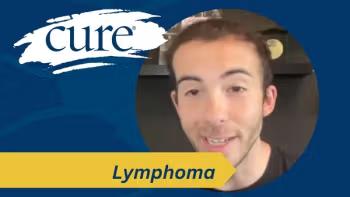
- Summer 2008
- Volume 7
- Issue 2
Picking Up the Pace
Igniting progress in the cure of children with cancer.
The treatment of childhood cancer is often (rightfully) touted as a success story, with dramatic increases in cure rates occurring over the second half of the past century. Yet despite major advances in our scientific understanding of many childhood cancers, there has been a significant slowing in our rate of progress. In fact, the overall death rate from cancer for children ages 14 and under between 1997 and 2005 diminished only slightly, from 2.6 to 2.4 per 100,000. How can this be?
Several factors are to blame for the slowdown, but a fundamental reason has been a lack of new anti-cancer drugs developed for children. Although the pharmaceutical industry cumulatively invests more money in research than the National Institutes of Health, this investment historically has all but excluded cancer research for children.
Yet the drug development landscape has begun to change. Legislative initiatives that offer economic incentives to industry to conduct appropriate clinical trials in children have significantly raised the profile of many pediatric diseases within drug companies.
Since the publication of the human genome sequence more than five years ago, our understanding of the basis for childhood cancers has increased dramatically. Translating this knowledge into new treatments is indeed challenging. Fortunately, our ability to define strategies that will lead to discovery of important new molecular targets is advancing at a rapid pace.
With increasing collaboration between academic medical centers, the pharmaceutical industry, and the National Cancer Institute, there has never been greater potential to develop molecularly targeted therapy for childhood cancers. Yet with this hope for novel treatments comes the harsh reality of declining investment for cancer research.
Drug development for children with cancer can best succeed by strengthening research partnerships that already exist and establishing new ones. Although Congress has begun the process of developing economic drivers for industry, the legislative changes must be viewed as a beginning of what will be required, not a comprehensive solution.
So what must we do at a time when the increased costs of conducting clinical research are coupled with an NCI budget that struggles to minimize the funding cuts that support such research? At a time when the pharmaceutical industry is working to determine how best to meet not only the economic return their shareholders demand, but also the regulatory requirements and societal responsibilities that accompany childhood cancer drug development? At a time when academic medical centers place increasing demands on academic physicians who must both care for patients and conduct clinical research? What we must do is invest.
We must invest in research to identify the key treatment targets in childhood cancers, yet we must also invest in strengthening our clinical research infrastructure. With the fast pace of discovery emerging from laboratories, we need to rethink and redesign how to more efficiently answer questions through clinical trials.
As the challenges of turning discovery into treatment are complex, we must invest in team science, where the team includes academic medical centers, pharmaceutical and biotech industries, and government. The solution to securing investment includes enlisting friends and families of children with cancer. Together we must advocate for the funding and changes needed to restore the progress toward cure that we owe to our children.
—Peter C. Adamson, MD, is director for Clinical and Translational Research at The Children’s Hospital of Philadelphia and chair of Developmental Therapeutics for the Children’s Oncology Group.
Articles in this issue
over 15 years ago
On a Rollover 15 years ago
Detection Toolsover 15 years ago
Federal Laws Against Employer Discriminationover 15 years ago
Understanding Hereditary Cancerover 15 years ago
A Difficult Inheritanceover 15 years ago
Healing Escapesalmost 17 years ago
Web Exclusive: Another Sonalmost 17 years ago
Web Exclusive: Saving Livesover 17 years ago
Breaking News from ASCOover 17 years ago
A Better Way to the Brain



